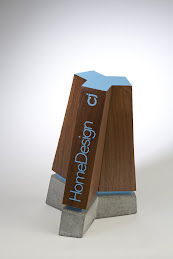The weather has turned cold and the
miscellaneous outdoor projects that have been keeping me from concrete projects are wrapped up for the year.
Looking towards next year I've got a few fun projects in the works.
1. I now have the domain Dr. Concrete so everything will be migrating to
www.drconcrete.net eventually. The website will be a mishmash of different services from consulting to
countertops.
2. I will be experimenting with two part polyurethane molds for a couple neat projects. I have been toying around with the idea of making some
Tiki torch holders. What better than a
tiki to hold them. We got a
tiki light as an early Christmas present. I'm going to attempt to turn that into a mold. Don't worry, the light isn't trademarked or copyrighted so I won't get in trouble.
3. I'm teaming with again
studiobuild to work on some concrete and wood trophies.
4. I'm doing a limited run of the planters to clear out the rest of the
Ipe wood.
Stay tuned for more details.












 Now for a test pour to see how he looks.
Now for a test pour to see how he looks.




















